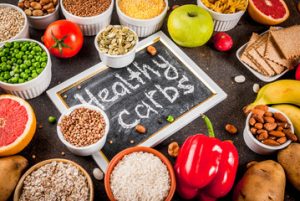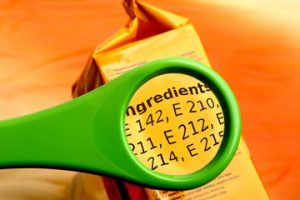Get A Rein On Those Seasonal Stuffing Habits
Seasonal traditions tempt us with tasty foods and confections to be savored and enjoyed regardless of ingredients, additives, nutritional values and origins of manufacturing.
December 25, 2019
Yummy!
It starts with Halloween – the delicious and guilty pleasure of gobbling down quantities of food and scrumptious goodies during the fall and winter celebrations. Containers of sugary confections are offered everywhere along with plates of scrumptious baked treats. Attend a party or seasonal get-together and dishes are heaped with generous portions by accommodating eateries and hosts.
The holiday gorging continues with Thanksgiving where the turkeys aren’t the only ones stuffed at the table. And don’t forget the plethora of pumpkin-spiced goodies and beverages along with the other traditional dishes and desserts we all savor, most laden with extra fats, sweeteners, additives and calories.

Continuous feasting happens with Christmas and New Year’s celebrations along with more specialty foodstuffs, traditional dishes, rich holiday beverages including alcohol (more empty calories), baked goods and candies. A sample nibble of a piece of fudge or cookie quickly turns into the consumption of the whole sweet and more.
The extra calories you consume takes its toll if you pack on extra pounds and by the end of winter, your clothes don’t seem to fit as well, so back to the gym and/or dieting until Valentine’s Day.
Why Worry?
Obesity is a burgeoning health issue in our modern American society that is endemic in all socioeconomic levels regardless of genetic or cultural factors. Multiple factors reflected in our lifestyle contribute to this chronic problem.
We have advanced from agricultural and industrial societies to a technological culture which results in decreased physical activity. Many individuals are in a hurry and turn to modern conveniences that limit how far they need to walk to get something or to go somewhere regardless of the benefits of walking.

Recreational sports often consist of sitting in front of the screen while ingesting calorie-loaded foods and beverages. Instead of walking to the convenience store less than a block away, we hop into our cars to get that last-minute item because it’s quicker and easier than hoofing it.
Another realistic fact is that not all individuals have access to recreation facilities, safe sidewalks and parks or transportation to go-to activities. Socioeconomic limitations restrict activities, reinforce isolation and foster compensatory eating habits.
Why We Gobble and Gobble and Gobble
Physiological responses to colder weather entice us to eat more as it approaches. Primordial instinct encourages the consumption of extra calories to provide more fat cells for natural insulation. But this tendency is not as vital for survival in modern societies with climate-controlled environments and improved living standards requiring less natural insulation against inclement conditions.
Improved nutrition and the huge variety of foodstuffs available also contribute to overeating and weight gain. Lower socioeconomic populations depend on cheaper multi processed food often loaded with additives and fillers, higher in calories but with less nutritional value. People purchase what they can afford and what is available, despite any desire to consume healthier (and more expensive) foods.
Social media influences, cultural and genetic factors, lack of nutritional education, chronic disease, food-related allergies and cultural habits must also be taken into consideration. And of course, there are personal idiosyncrasies to be observed.
Recent study results by the CDC, American Heart Association, Harvard School of Public Health and other organizations, indicate that there is a relationship between stress and carbohydrate craving that represents a real dietary struggle in today’s stressful environment.

When we eat carbs, the primordial part of our brain comes into play and releases a pleasurable chemical similar to serotonin as we savor our treat. We crave carbohydrates in simple forms including sweets, processed baked goods and soft drinks that are digested rapidly by the body and provide that burst of energy that comes from the spike in your blood sugar or glucose levels. Unfortunately, this rapid increase always decreases quickly unless you ingest some more carbs. In fact, the American Diabetes Association cautions that chronic spiking and dropping of blood glucose levels can contribute to the onset of Type 2 diabetes.
Sweet Mongers-you aren’t alone!
We, humans, revere our sweets. Most societies have a variety of special sweet foods to prepare and break out for special occasions, even for a casual get-together. We also live within a society that fosters group and individual rewards, often in the form of candy, sweetened beverages and other confections. After all, you had a stressful day and deserve that second helping of creme brulee, don’t you?
It would be unreasonable and impractical to expect individuals to suddenly eliminate all these tasty items from their daily and seasonal diets. Going “cold turkey” with any habits including eating patterns is possible however you may find yourself feeling deprived and worrying about what you are not allowed to eat. Start simply by practicing moderation and making conscious choices of what and how much to gobble up at that festive occasion.
Curb Those Carb Cravings
Similar to other habits, you can control the quantity and quality of the carbohydrates and other high-calorie foods you consume. Keeping your mind and body busy detracts from the craving to nibble on something when you’re not even hungry. Too often, we reach for a snack just out of boredom.
Eat mindfully and think about what you select to eat, portion sizes and pay attention to why and what you are eating. Chew slowly and savor each mouthful of food and you will find you will fill up quicker and discover the meal is more satisfying.
Accustomed to that rich dessert after dinner and/or lunch that leaves you feeling sated but guilty? Try decreasing the amount of each serving in small increments or substituting something just as sweet with healthier ingredients.

Not all carbohydrates are the same. Simple carbs like candy give an instant perk but complex carbs, the kind you will find in whole grain products and vegetables, provide the sustained energy our bodies need to function. Like protein, they take longer to digest and you feel fuller longer because your blood sugar level rises slower.
Substitute water for some of those sugary drinks you consume every day or cut down on the amount of sugar and creams you add to your hot beverages.
Check Out Labels
There are always the usual packaged culprits loaded with sugars and additives, including seasonal beverages. It’s a good idea to read the ingredients and the origin of manufacturing.
Check out the list of ingredients. The first item listed is the main ingredient of the foodstuff. You may be surprised at the amount of sugar and salt in that package of food.
Many candies, baked and canned goods are produced in countries that don’t regulate the amount and quantity of potentially harmful ingredients and preservatives in the manufacturing process. Don’t just don’t scan those labels for caloric values, also check what the product contains and where it comes from. Be conscious of what’s in those foods that you share with others and consume yourself.

If you’re prepping homemade dishes and goodies, you can adjust the amounts of sugary, fat-laden and other high-calorie ingredients that you add. You also have the personal satisfaction of experimenting with existing recipes or create your own with healthier yet still tasty and fun options. Consider substituting decorative embellishments created with natural or non-edible decorations that may become collective items for guests.
The most important thing is to have fun and let your imagination play during this holiday season while watching that waistline.














